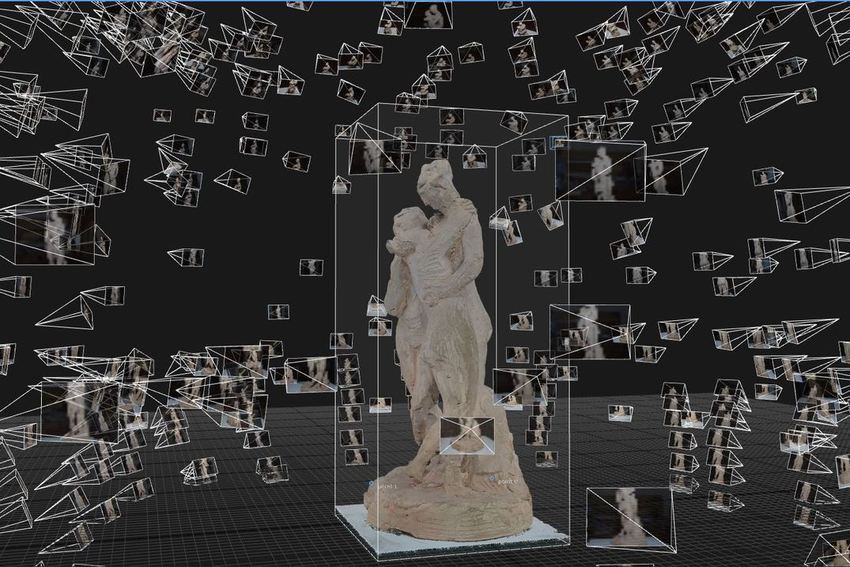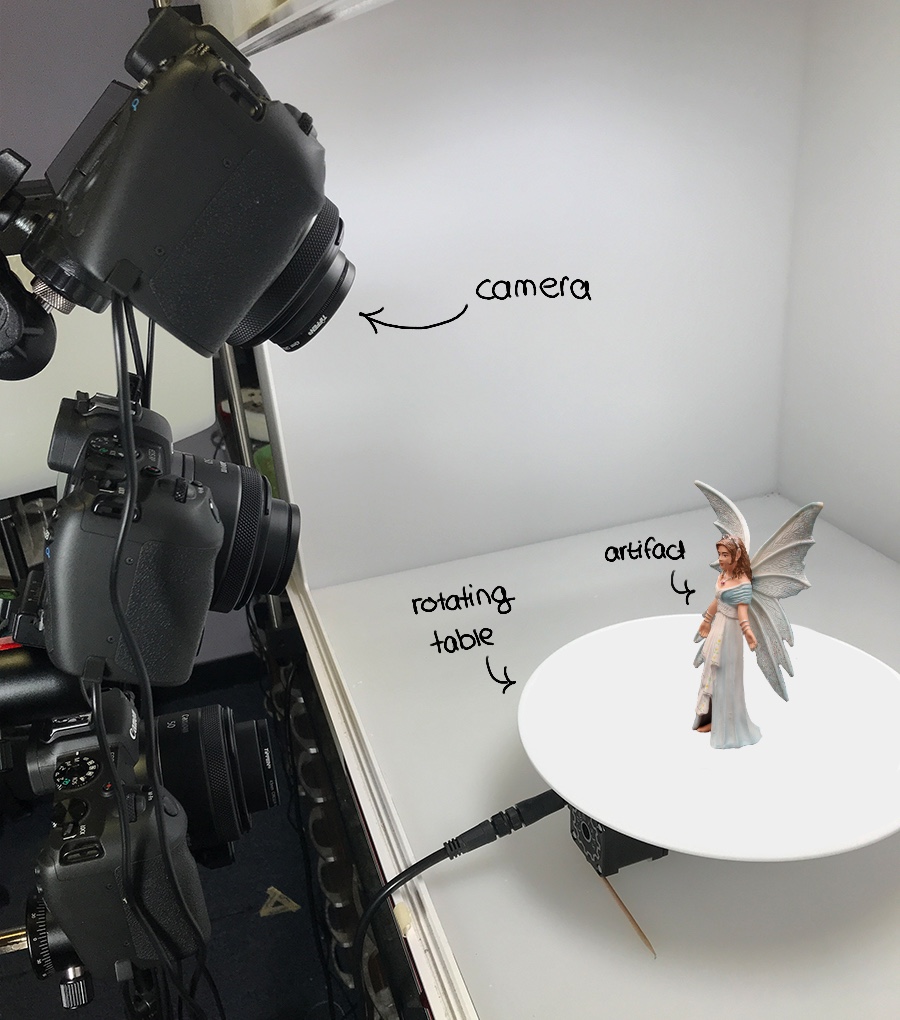
https://www.factum-arte.com/pag/1345/PHOTOGRAMMETRY
To realize our fairy toy figurine as a 3D model, we opted for photogrammetry and structure from motion. Photogrammetry is a method to obtain reliable information about surfaces and objects without physical contact, measuring and interpreting this information (Schenk, 2005). The term comes from the Greek words phos (light), gamma (something drawn) and metrein (measure). As can be derived from this name, photogrammetry relies on different types of information: geometric, physical, semantic and temporal information (Schenk, 2005). It emerged alongside photography in 1839 and has developed from analogue to digital photogrammetry (Schenk, 2005).
Photogrammetry can be done with aerial as well as with terrestrial images, taken by film cameras, digital cameras or electronic scanners (Aber et al., 2010). Most important are the measurements of an object that should be digitised. This includes the measuring of coordinates or the quantification of distances and heights (Aber et al., 2010).

Photogrammetry has different advantages but also disadvantages. It can be practiced with no contact to the object, as it can provide measurements from a distance, which is very meaningful when it comes to artifacts of cultural heritage that should not be touched. But a big disadvantage is that photogrammetry always depends on light. It is not possible to capture something in a dark environment or put every artifact into a photo studio or lightbox.
One specific method of photogrammetry is Structure from Motion. It is a close-ranged method and combines photogrammetry and computer vision algorithms to extract 3D information from images and to produce 3D representations of a scene or an object (Remaking Material Culture in 3D: 4.1 Capturing Data for Structure from Motion: 4.1.3 SfM Capturing: Advance, n.d.). Structure from Motion aims to reconstruct the position of the camera and the geometry of the captured object. The 3D structure of the object can be determined through the analysis of the sequential change of the camera position relative to the object. The algorithms identify the same pixels in the photographs (Remaking Material Culture in 3D: 4.1 Capturing Data for Structure from Motion: 4.1.3 SfM Capturing: Advance, n.d.).
To practice structure from motion, it is necessary to take many images from all angles possible around the object, both vertically and horizontally. While taking the pictures, imagining a hemisphere around the object helps to cover all angles and perspectives. The photos should have an overlap of at least 60%. The light needs to be consistent during the entire process. Changes in lightning can confuse the software and lead to distorted results (#dariah Teach, 2020).

After taking the pictures, the image dataset will be processed by a software, for instance Metashape. This software aligns all pictures, builds a point cloud and a 3D model out of the information given by the images.